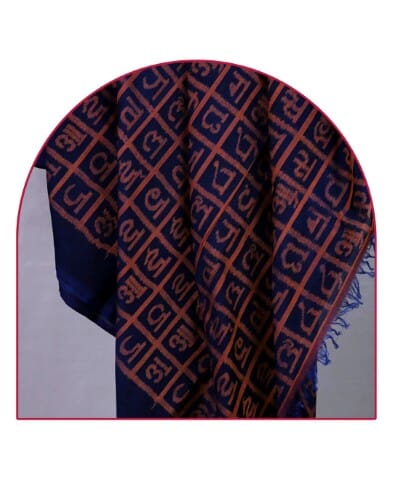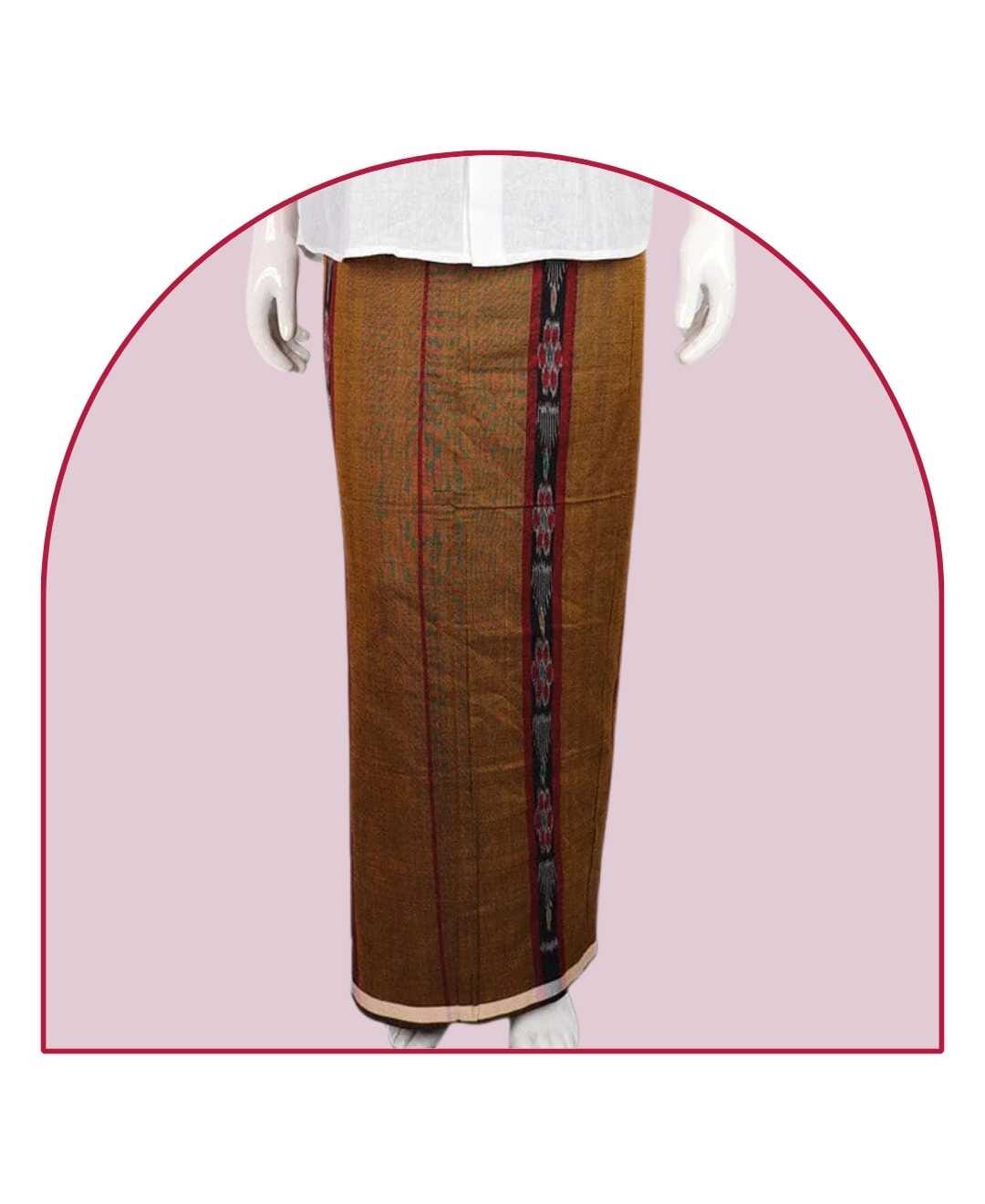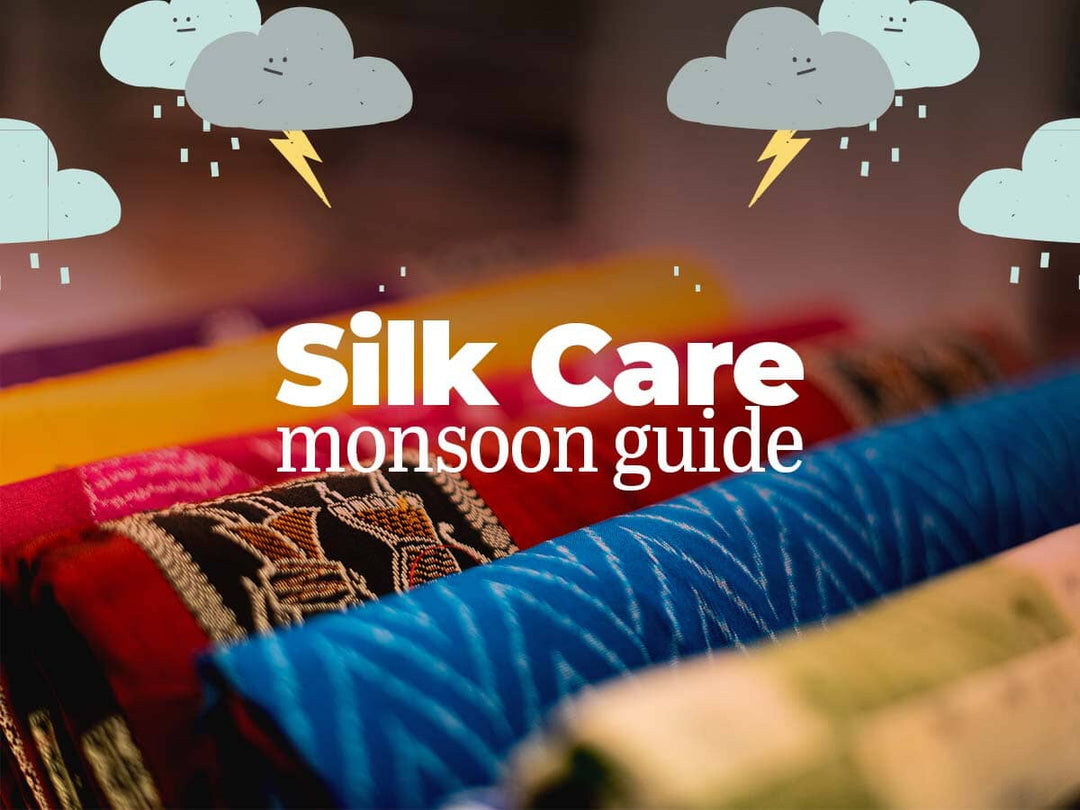The Ultimate Guide to Caring for Your Sambalpuri Sarees
Black Silk Sambalpuri Saree with Green Motifs

Sambalpuri sarees, handwoven treasures from the heart of Odisha, are renowned for their intricate designs, vibrant colors, and rich cultural significance. These exquisite garments, often passed down through generations, require special care to maintain their beauty and longevity. Priyadarshini Handloom, a leading retailer of authentic Odisha handloom, understands the value of these sarees and is committed to helping you preserve them. This comprehensive guide will provide you with everything you need to know about caring for your precious Sambalpuri sarees, ensuring they remain as stunning as the day you bought them.
Understanding Your Sambalpuri Saree: Fabric and Weave
Exquisite Blue & Red Silk Sambalpuri Saree

Identifying the Fabric: Silk, Cotton, or Tussar
Knowing the fabric of your Sambalpuri saree is the first step in proper saree care. These beautiful sarees are typically woven from silk, cotton, or tussar. Each material demands a distinct approach to maintenance.
- Silk Sarees: Silk, known for its luxurious feel and delicate nature, requires gentle handling. The natural protein fibers of silk can be easily damaged by harsh chemicals or rough treatment. These sarees should ideally be dry-cleaned. If handwashing is absolutely necessary, it should be done with extreme caution using cold water and a mild, pH-neutral detergent specifically designed for silk.
- Cotton Sarees: Cotton sarees, while more robust than silk, still require careful handling. Cotton is known for its breathability and comfort, but it's also prone to shrinking and color bleeding. Handwashing in cold or lukewarm water with a mild detergent is generally recommended for cotton sarees. Avoid harsh scrubbing and wringing.
- Tussar Sarees: Tussar silk, also known as "wild silk," has a unique, slightly coarse texture and a natural golden sheen. It's more durable than mulberry silk but still needs careful handling. Like mulberry silk, tussar sarees are best dry-cleaned to maintain their texture and sheen. Handwashing should be avoided unless absolutely necessary.
Intricate Sambalpuri Silk Saree: Pasapalli Pattern

Product Highlight: For instance, our Black Silk Sambalpuri Saree with Green Motifs would require the delicate care instructions outlined for silk. This beautiful saree, priced at Rs. 28,844, showcases the intricate craftsmanship of Sambalpuri silk weaving. Similarly, our Exquisite Black Silk Sambalpuri Saree with Intricate Pasapalli Design, priced at Rs. 29,705, demands the utmost care to preserve its beauty.
The Significance of the Weave
Sambalpuri sarees are celebrated for their unique weaving styles, including Bomkai, Pasapalli, and Ikat. The type of weave not only contributes to the aesthetic appeal but also influences the saree's care routine.
- Bomkai: Known for its intricate thread work, Bomkai sarees often feature a combination of ikat and embroidery. These sarees require careful handling to prevent the delicate embroidery from getting damaged.
- Pasapalli: Characterized by its distinctive checkerboard pattern, Pasapalli sarees can be woven in both silk and cotton. The tight weave of Pasapalli makes it relatively durable, but care should be taken to avoid snagging the threads.
- Ikat: The hallmark of Sambalpuri sarees, Ikat involves a complex process of tie-dyeing the yarn before weaving. This creates the unique, blurred patterns characteristic of Ikat. The dyeing process can sometimes make the colors susceptible to bleeding, so extra care should be taken during washing.
Premium Sambalpuri Silk Saree with Pasapalli Pattern

Understanding the weave helps you appreciate the artistry involved and tailor your care accordingly. A tightly woven saree might be more resistant to damage than a loosely woven one.
Washing and Cleaning Your Sambalpuri Saree
Exquisite Black Silk Sambalpuri Saree with Red Motifs

Handwashing vs. Dry Cleaning
The choice between handwashing and dry cleaning depends largely on the fabric. As mentioned earlier, Silk Saree Care and Tussar Saree Care are best achieved through professional dry cleaning. This method uses chemical solvents instead of water, minimizing the risk of shrinkage, color fading, and damage to the delicate fibers.
Cotton Saree Care, on the other hand, often allows for handwashing. However, it's crucial to follow these steps for Handloom Saree Maintenance:
- Test for Colorfastness: Before washing the entire saree, test a small, inconspicuous area for colorfastness. Dab a wet cotton ball on the fabric and see if any color bleeds onto it.
- Use Cold Water: Always use cold water for washing Sambalpuri cotton sarees. Hot water can cause the colors to bleed and the fabric to shrink.
- Mild Detergent: Opt for a mild, pH-neutral detergent specifically formulated for delicate fabrics. Avoid using harsh detergents or bleach, as they can damage the fibers and fade the colors.
- Gentle Soaking: Soak the saree in cold water with detergent for a short period (5-10 minutes). Avoid prolonged soaking, as it can weaken the fibers.
- No Scrubbing or Wringing: Gently agitate the saree in the water without scrubbing or wringing. These actions can distort the weave and damage the fabric.
- Rinse Thoroughly: Rinse the saree several times with cold water until all traces of detergent are removed.
- Drying: Avoid wringing out the water. Instead, gently squeeze out excess water and roll the saree in a clean, dry towel to absorb moisture. Hang the saree to dry in a shaded area, away from direct sunlight. Direct sunlight can cause the colors to fade.
Enchanting Black Sambalpuri Silk Saree with Butta Pattern

Stain Removal Techniques
Accidents happen, and your precious Sambalpuri saree might fall victim to stains. Prompt action is crucial for successful stain removal. Here's a guide on how to remove stains from Sambalpuri sarees:
- Identify the Stain: Different stains require different treatments. Common stains include oil-based (grease, oil), water-based (tea, coffee), and protein-based (blood, milk).
- Act Quickly: The sooner you treat the stain, the better the chances of removing it completely.
- Blot, Don't Rub: Always blot the stain gently with a clean cloth or absorbent paper. Rubbing can spread the stain and damage the fabric.
- Test on an Inconspicuous Area: Before applying any stain removal solution, test it on a hidden part of the saree to ensure it doesn't damage the fabric or cause discoloration.
- Water-Based Stains: For stains like tea or coffee, rinse the affected area with cold water immediately. You can also use a mild detergent solution.
- Oil-Based Stains: For greasy stains, apply talcum powder or cornstarch to absorb the oil. Let it sit for a few hours, then brush it off gently. You may need to repeat this process several times. For stubborn oil stains, consider professional dry cleaning.
- Protein-Based Stains: For stains like blood or milk, soak the affected area in cold water for 30 minutes. Then, gently rub the stain with a mild detergent solution. Avoid using hot water, as it can set the stain.
- Stubborn Stains: If home remedies fail, it's best to seek professional help. Inform the dry cleaner about the type of stain and any treatments you've already tried.
Handwoven Splendor: Magenta Silk Sambalpuri Saree

Product Highlight: Even with careful wear, accidents can happen. Knowing how to handle stains will help you maintain sarees like our Premium Sambalpuri Silk Saree with Pasapalli Pattern, ensuring it remains pristine. This exquisite saree, priced at Rs. 27,915, is a testament to the enduring beauty of Sambalpuri craftsmanship.
Storing and Maintaining Your Sambalpuri Saree
Exquisite Multi-Colored Silk Sambalpuri Saree with Motifs

Proper Folding and Storage Techniques
Correct storage is essential for preserving the beauty and longevity of your Sambalpuri sarees. Here's how to store Sambalpuri sarees properly:
- Air Out Before Storing: Before storing your saree, air it out for a few hours to remove any residual moisture or odors.
- Avoid Plastic Bags: Never store your sarees in plastic bags, as they trap moisture and can lead to mildew growth.
- Use Saree Bags or Muslin Cloth: Opt for breathable cotton saree bags or wrap your sarees in clean muslin cloth. These materials allow air circulation and prevent moisture buildup.
- Acid-Free Paper: For added protection, you can line your saree bags or storage boxes with acid-free paper. This helps prevent discoloration and damage from acidic materials.
- Avoid Direct Sunlight: Store your sarees in a cool, dark, and dry place, away from direct sunlight and heat sources.
- Refold Periodically: To prevent permanent creases, refold your sarees every few months along different lines.
- Neem Leaves or Naphthalene Balls: To keep pests away, you can place dried neem leaves or naphthalene balls in your storage area. However, ensure they don't come in direct contact with the sarees, as they can stain the fabric.
Ironing and Finishing Touches
Ironing can refresh the look of your Sambalpuri saree, but it requires caution. Here's how to iron Sambalpuri sarees safely:
- Check the Fabric: Always check the fabric type before ironing. Silk sarees require a low heat setting, while cotton sarees can tolerate a slightly higher temperature.
- Use a Pressing Cloth: Place a thin cotton cloth over the saree before ironing. This acts as a barrier, protecting the delicate fabric from direct heat and preventing scorching or shine marks.
- Iron on the Reverse Side: If possible, iron the saree on the reverse side to minimize the risk of damaging the embroidery or embellishments.
- Low Heat Setting: Use a low heat setting, especially for silk and tussar sarees.
- Steam Iron: A steam iron can be helpful in removing creases without applying excessive heat.
- Avoid Ironing Directly on Zari: If your saree has zari work, avoid ironing directly over it. Instead, iron around the zari or use a pressing cloth.
Enchanting Sambalpuri Silk Saree: Black and Yellow

Guide to preserving the color of Sambalpuri sarees: Store in a dark place, away from sunlight. Use acid-free tissue paper or cotton cloth for wrapping. Avoid using perfumes or deodorants directly on the saree. Air out the saree periodically.
Product Highlight: Proper ironing will help maintain the crispness of sarees like our Enchanting Black Sambalpuri Silk Saree with Butta Pattern. This stunning saree, priced at Rs. 28,673, deserves careful handling to preserve its beauty.
Reviving and Repurposing Old Sambalpuri Sarees
Exquisite Black Silk Sambalpuri Saree with Intricate Pasapalli Design

Giving Old Sarees a New Life
Even after years of careful maintenance, there might come a time when your Sambalpuri saree is no longer wearable in its original form. But that doesn't mean its story has to end. What to do with old Sambalpuri saree you ask? There are many creative ways to repurpose these beautiful textiles.
Upcycling Ideas: Transform into New Garments: Old sarees can be transformed into beautiful kurtas, dupattas, skirts, or even dresses. Create Home Decor: Sambalpuri fabrics can be used to make stunning cushion covers, table runners, wall hangings, or even curtains. Craft Accessories: Smaller pieces of fabric can be used to create unique accessories like potlis (drawstring bags), scarves, or even jewelry. Quilting: Combine pieces of different sarees to create a beautiful and unique quilt.
Restoration and Repair
If your saree has minor damages, such as small tears or loose threads, it might be possible to repair it. How to maintain handwoven Sambalpuri sarees through restoration requires skill and patience.
Repair Options: Darning: Small holes or tears can be darned using matching thread. Patchwork: If the tear is too large to darn, you can use a matching fabric patch to cover it. This can be done by hand or using a sewing machine. Embroidery: You can use embroidery to creatively cover up small imperfections or add a unique touch to your saree. Professional Restoration: For significant damage or if you're not confident in your repair skills, consider seeking professional restoration services. These experts can often work wonders in preserving your heirloom pieces.
Conclusion
Caring for your Sambalpuri saree is not just about maintenance; it's about preserving a piece of art and cultural heritage. By following these guidelines, you can ensure that your treasured sarees remain beautiful for years to come. Priyadarshini Handloom is dedicated to providing you with the finest handloom sarees and the knowledge to care for them. We invite you to explore our exquisite collection and experience the timeless elegance of Sambalpuri sarees.
Call to Action: Visit our website today to explore our stunning collection of authentic Sambalpuri sarees and other Odisha handloom products! Subscribe to our newsletter for more tips on saree care and exclusive updates on new arrivals.



























एक टिप्पणी छोड़ें